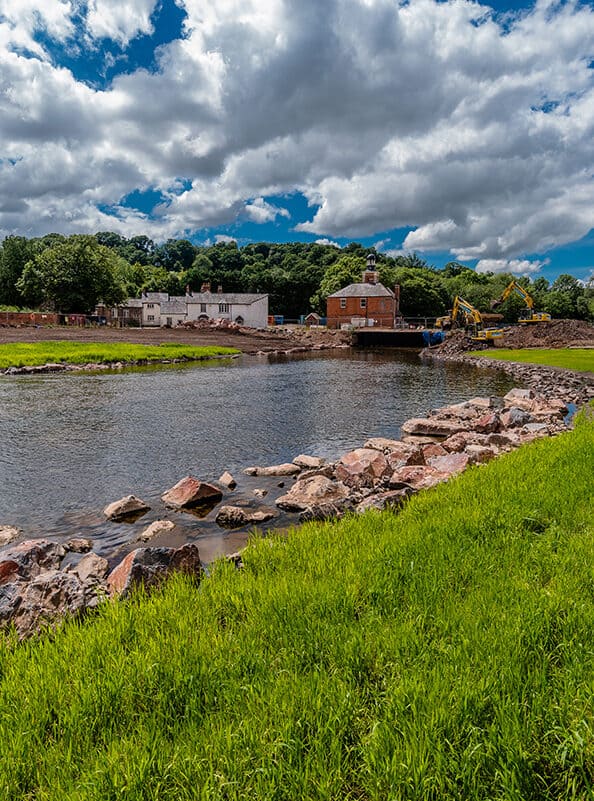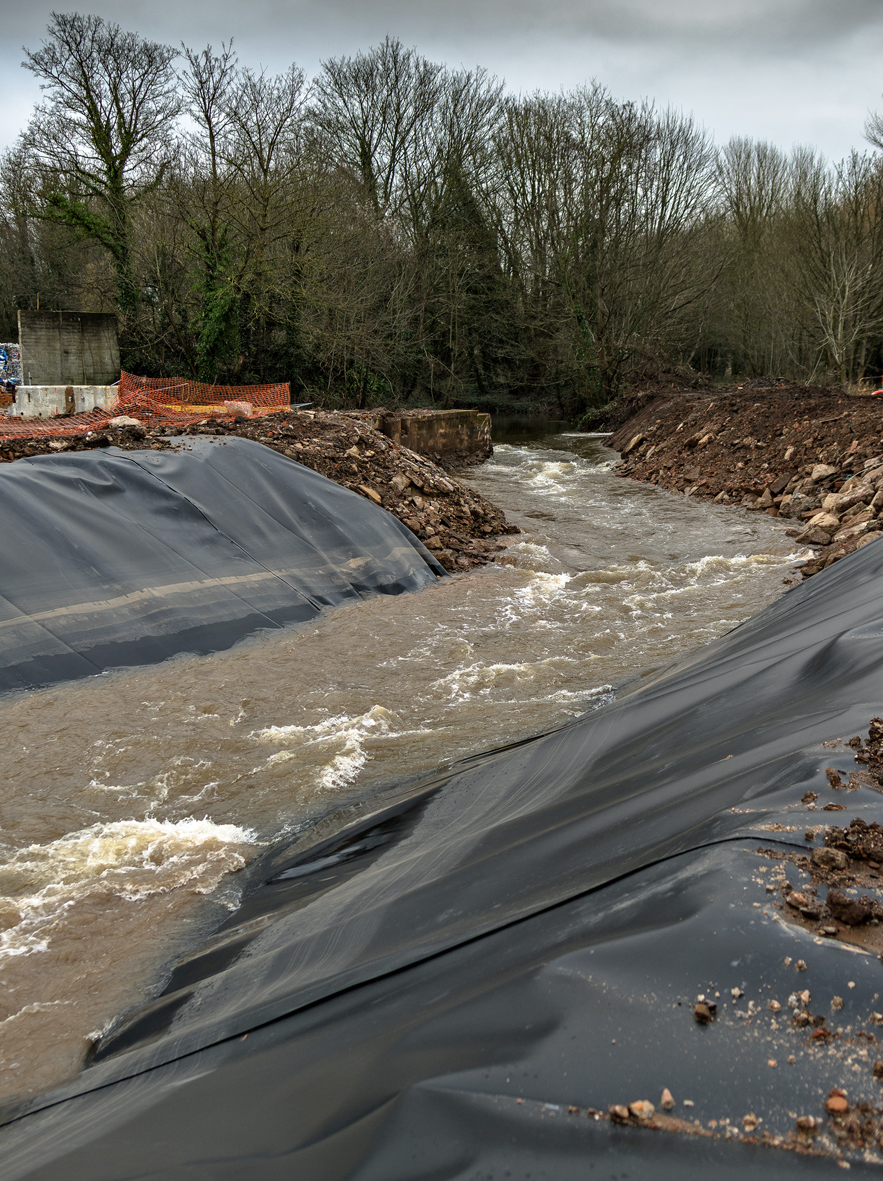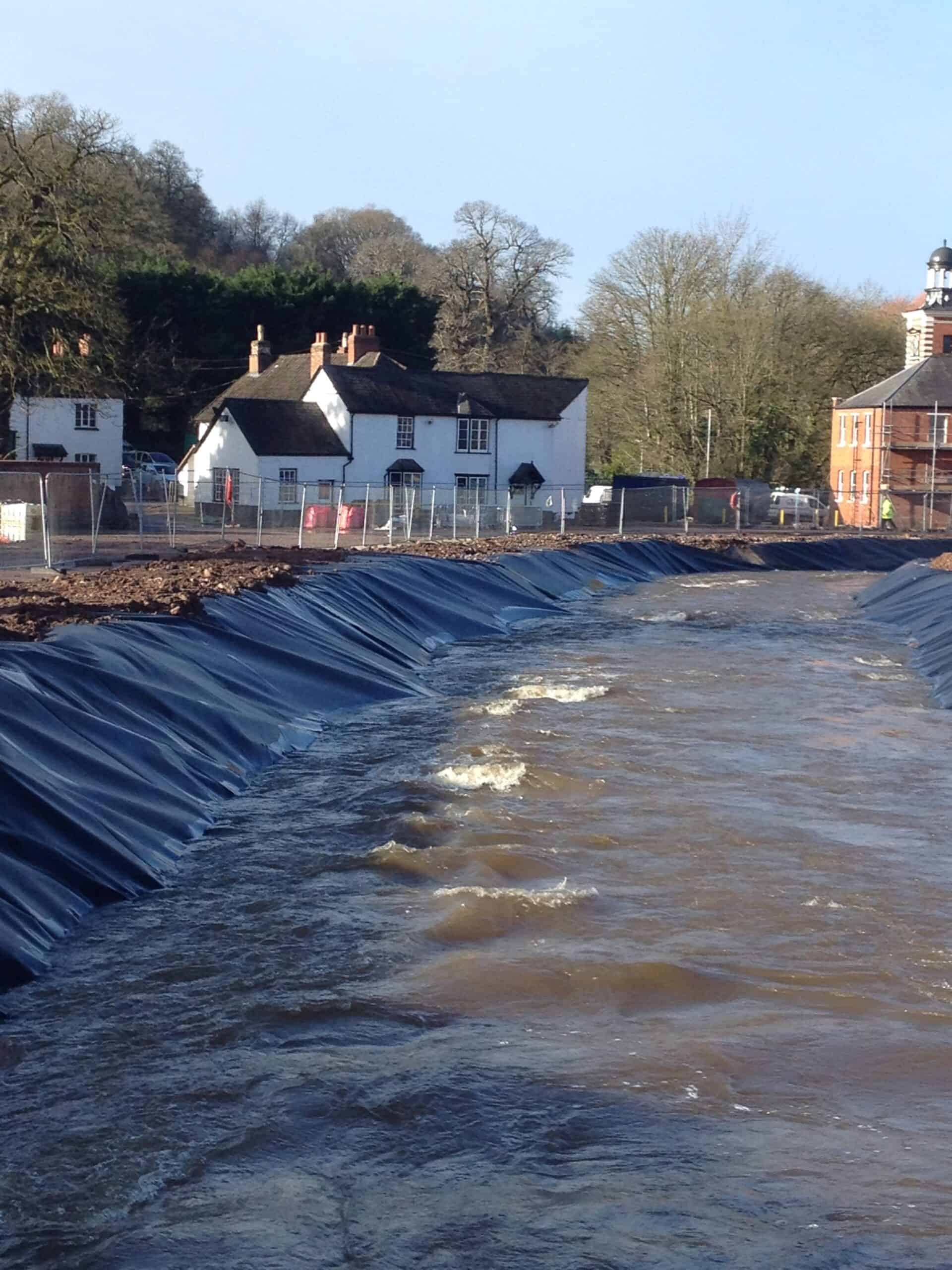Case Study
Silverton Mill, Devon
DS Smith
£4.5m
3 Years
Location &
Overview
Award winning £3.2m regeneration project encompassing demolition, remediation and formation of a new river channel, flood defence works, ecological formation and biodiversity enhancements.
As Principal Contractor John F Hunt was contracted to demolish and remediate a former paper mill that straddled a major river (River Culm) in Devon. The mill had a heavy industrial usage dating back to the 1800’s and left a significant pollution legacy in the form of heavy and light hydrocarbons and asbestos in the soils.
We completed the project from initial design through to successful handover, including:

Scope of
Work

- Supplementary site investigation
- Remediation and civil engineering design
- Negotiation and agreement with regulators
- Bat mitigation measures
- Conventional and explosive demolition of above ground structures
- Diversion of the River Culm at Silverton Mills enabling excavation of
- hydrocarbon contaminated soils, demolition of the culvert walls and
- reconstruction of clay lined river banks
- Mill race culvert demolition
- Slab removal and on-site crushing
- Excavation, waste sentencing and off-site disposal of contaminated soils
- Import of fill materials
- River channel reconstruction and landscaping
Remediation
Work
The initial design problem, was how to remediate the contaminated ground either side and beneath an existing culvert, which had a substantially active water flow and a
very rapid flood response during heavy rainfall.
The John F Hunt team designed, agreed and constructed a river diversion enabling the flow through the culvert could be stopped, allowing remediation of the ground
around it and the eventual restoration of a naturalised river channel.
The excavated and treated materials were subject to a strict stockpile and CL:AIRE code of practice MMP. Testing, categorisation and segregation was undertaken, enabling suitability for re-use.

Challenges &
Solutions
The former paper mill site had a heavy industrial legacy dating back to the 1800’s, which had resulted in a
harsh industrial landscape and negative visual impact. In addition to the adverse effect the site had on the local ecology, it was contaminated with significant petroleum hydrocarbons.
The contaminants were present alongside and below the culverted watercourse. Material selection was vital to the longevity of the river design. This included the use of British Waterways approved blue lias clay, a 200mm thick layer formed of recycled no-fine aggregates generated from the demolition process, and carefully selected quarried limestone material ranging in size from cobbles to boulders weighing several tonnes.
Petroleum hydrocarbon impacted soils were excavated from the areas adjacent to the former culvert structures.
Ecological surveys undertaken prior to the commencement of the works, identified maternity roosts for Daubenton’s bats within a small section of culvert and Brown Long-Eared bats within the mill structure itself. Whilst sensitive species such as reptiles and aquatic animals were not identified in significant numbers, care was required to avoid any potential negative impacts on all wildlife throughout the works.
The design of the newly created river channel required an allowance for natural freedom for the river to find a stable regime. We promoted the construction of a flood defence embankment to protect lower ground and retained listed buildings on the downstream bank on the western edge.
The river base was constructed to natural width with gentle sloping banks to create a significantly widened flood stage channel. The over widening of the channel at flood levels was designed to reduce velocities and hence erosion pressure.
Using a combination of historic analysis and the Environment Agency’s flood data we ensured that adequate water storage was built into the new river and the adjacent floodplain, thereby reducing the risk of flooding for adjacent communities and with additional benefits for local wildlife.
The transformation of the large culverted section of the River Culm into a diverse and attractive river corridor was necessary to improve flood defences; as part of this the range of river and wildlife habitats introduced as part of the project also helped to enrich biodiversity.
Once the remediation works were complete, the former culvert was removed and the new naturalised river channel created. This included a groundwater base flow alleviation system, rock armour flow protection and restoration of ‘natural’ embankments.
We maintained the existing habitats and restored or improved the diversity of habitats to increase the range of flora and fauna indigenous to the area.
Added
Value
Upon project completion at Silverton Mill, the collaborative John F Hunt and DS Smith Property team
were highly commended by our client, the National Trust, and won the Best Biodiversity Enhancement Award at the flagship Brownfield Briefing Awards. The award recognised the many other tangible benefits to our approach to remediation. The project demonstrated clear biodiversity and flood prevention benefits, enhanced the visual impact of the site and respected the integrity of local ecosystems whilst demonstrating innovative design and long-term thinking.
John F Hunt have the in-house capabilities to find a solution; key to this is maintaining a close working relationship with the wider project team – our client and regulators.
Award-winning: We successfully delivered the project and the scheme won the Best Biodiversity Enhancement Award at the flagship Brownfield Briefing Awards in 2017
Our collaborative ethos resulted in the successful delivery of a complex project. The scheme received positive feedback from the Environment Agency, who praised our “partnership approach to the project”
The solution to restore and enhance the River Culm corridor has reversed the loss of biodiversity, making it possible for species to grow in numbers and increase in range. It has also provided a means of managing surface water as a contribution to the regions flood defences
Silverton Mill site has been cleared of built structures, contaminated ground remediated,
and the river reinstated to promote biodiversity.
Our sustainable and environmentally sensitive design achieved by an iterative process meets the aims of The National Trust and the Environment Agency
